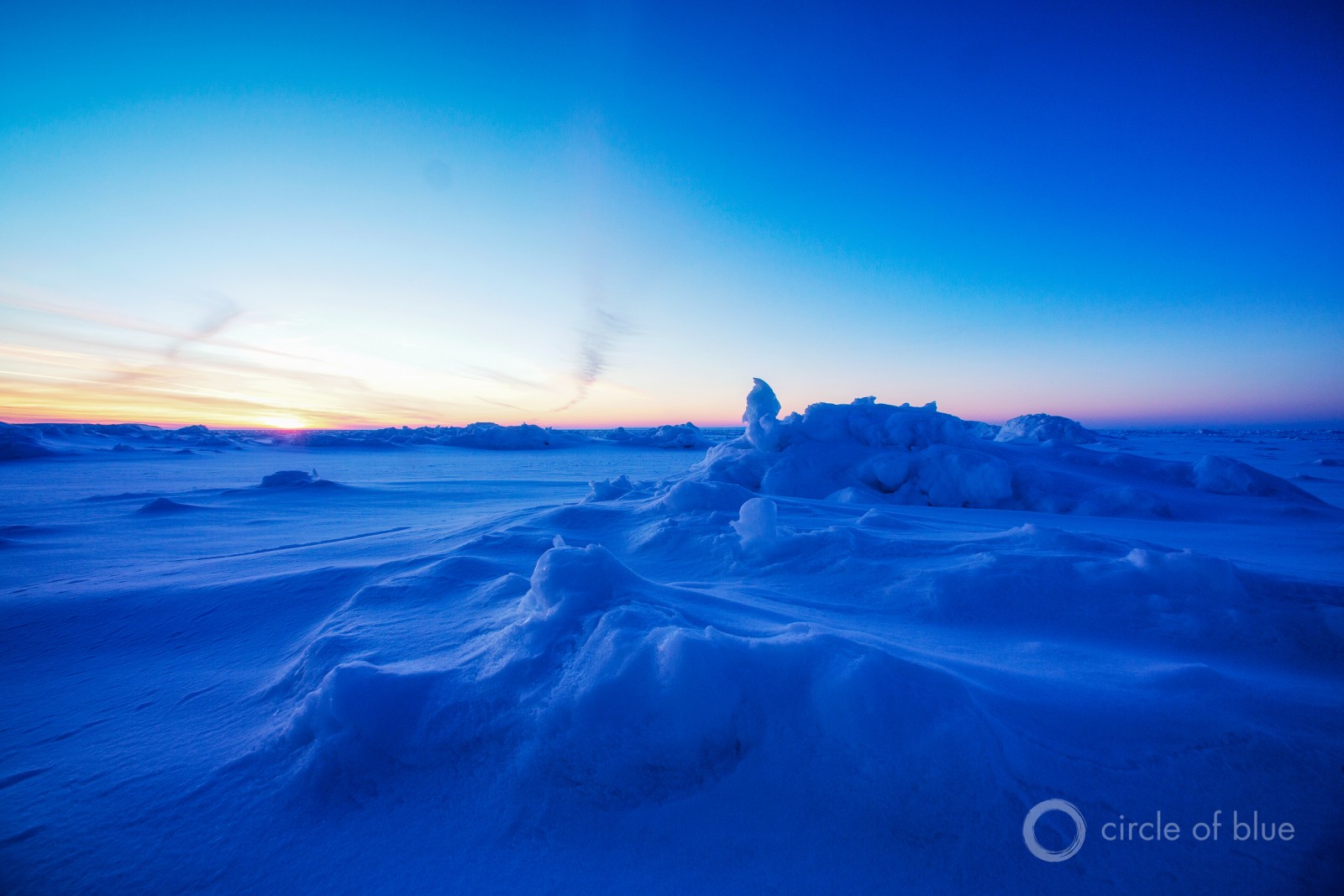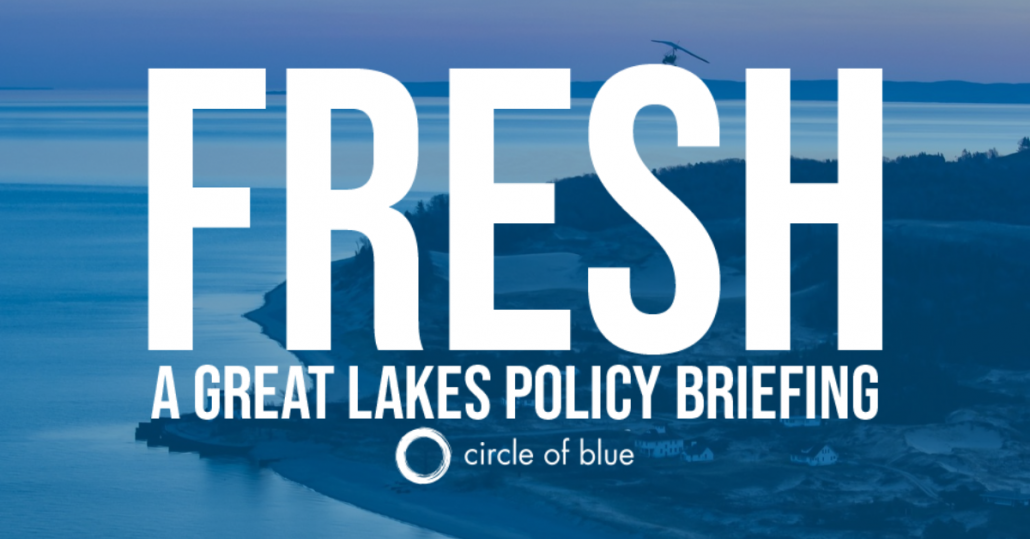The Stream, January 21, 2025: ‘Rainforestation’ in Philippines Protects Cities From Floods; EU Proposes PFAS Ban

Ice on Lake Michigan. Photo © J. Carl Ganter/Circle of Blue
YOUR GLOBAL RUNDOWN
- The European Union plans to introduce a sweeping ban on the use of PFAS in consumer products, with certain exemptions.
- In communities in northern Brazil, the leadership of women in sustainable, small-scale agribusiness has boosted the country’s acai berry production.
- Fourteen years after flooding killed more than 1,000 people on the island of Mindanao in the Philippines, Indigenous growers are restoring a natural floodplain to help protect and rejuvenate the rainforest community.
- A new study suggests that since 1995, the Great Lakes have lost two weeks of winter weather every decade due to climate change.
— Christian Thorsberg, Interim Stream Editor
Fresh: From the Great Lakes Region
Boundary Waters Canoe Area: As U.S. President Donald Trump begins his second term in office, environmentalists are preparing for his administration to quickly reverse a 20-year mining ban “on about 350 square miles of the Superior National Forest, just south of the Boundary Waters,” Minnesota Public Radio reports. If an executive order is issued, federal leases may also be restored for Twin Metals Minnesota to continue work on a proposed copper mine near Ely, adjacent to a federally protected wilderness area, flush with freshwater ecosystems.
Bridge Michigan, Circle of Blue, Great Lakes Now at Detroit Public Television, Michigan Public and The Narwhal work together to report on the most pressing threats to the Great Lakes region’s water. This independent journalism is supported by the Charles Stewart Mott Foundation. Find all the work here.
- Climate change, erratic weather taking toll on Michigan cherry industry — Bridge Michigan
- Trump’s aggressive water statement riles, unites Canadians — Great Lakes Now
- Court challenge to a permit for Enbridge’s tunnel for Line 5 — Michigan Public
- New year, new power: Ford government can now overrule conservation authorities — The Narwhal
The Lead
On Mindanao, the second-largest island in the Philippines, robusta coffee shrubs and red and white lauan trees grow in humid harmony, rejuvenating a tropical landscape that was once overrun by commercial logging and farming, Mongabay reports.
Supported by local NGOs and harnessing the knowledge of Indigenous growers, the effort to bring endemic plants back to the island — dubbed “rainforestation” — has shown myriad ecological and human health benefits. Not only do the plants provide habitat for endangered species such as the Philippine eagle, but they are a natural defense against flooding, especially for the city of Cagayan de Oro. Residents know that in the absence of a natural floodplain on the mountainous landscape, heavy rains mean destruction. A storm in 2011 flooded the Cagayan de Oro river basin, “killing more than 1,260 people and causing 1.3 billion pesos ($30 million at the time) in damage to agriculture and property.” The restored floodplain, combined with a newly built flood control project, is helping to keep the city’s 720,000 residents safe.
Those who volunteer their land to participate in the rainforestation effort, funded by the Xavier Science Foundation, receive compensation and are able to harvest the coffee they grow. “From 2021 until 2024, around 40 households have enrolled their land in the project, each earning at least 60,000 pesos, or $1,029, per hectare ($415 per acre) for planting and maintaining a rainforestation farm,” according to Mongabay.
Recent WaterNews from Circle of Blue
- Fertilizer from Sewage, a Utility Money Maker, Faces Uncertain Future — Wastewater industry rattled by toxic chemical contaminants in biosolids.
- OPINION: Spreading Like Wildfire — How Misinformation About Water and Fire in Los Angeles Inflames the Situation.
This Week’s Top Water Stories, Told In Numbers
94
The percentage of Brazil’s total acai berry output — the largest in the world — which comes from its northern state of Pará, where women-led growing efforts have helped increase the berry’s production by roughly 50 percent over the past decade, and 15 percent from 2020 to 2023, Reuters reports. The leadership of women in community-scale, sustainable harvests, according to Brazilian officials, has had a significant and positive effect on rural economies. On average, after an initial investment of roughly $3,300 for the growing of “black gold” acai berries, these businesses are self-sustaining — in 2021, almost half of these loans were given to women producers.
14
The number of winter days — “defined as days with ice cover or having surface temperatures of less than 2 degrees Celsius” (35.6 degrees Fahrenheit) — on the Great Lakes lost each decade between 1995 and 2023, according to a new study published in Environmental Research Letters, Wisconsin Public Radio reports. During that span, 25 percent of ice cover has been lost. These changes have and are likely to continue to affect food webs, extended periods of algal blooms, shipping routes, and fishing.
On the Radar
Two years after Sweden, Norway, Denmark, Germany, and the Netherlands showed strong support for the eradication of PFAS chemicals, the European Union appears poised to act, indicating that a proposed ban on the usage of “forever chemicals,” toxic to human health and the environment, in consumer products is likely to come sometime next year, Reuters reports. In the interim, regulators will decide which products — such as asthma inhalers or electric vehicle semiconductors — will be exempt from the sweeping law.
In Context: Drugs, Microplastics and Forever Chemicals: The Great Lakes are Filling Up With Unregulated Contaminants
49th State Focus: Alaskans Willing to Pay More for Locally Grown Foods, Study Suggests
“Alaska’s unique geographical location significantly influences its food supply. Since the majority of Alaska’s food is imported, Alaska’s food supply is vulnerable to supply chain disruptions and natural disasters. A stronger local food system could improve the resilience of the state’s food supply.” — Qiujie Zheng, an associate professor at the University of Maine.
According to a new study published in December in the journal AgEcon Search, Alaskans are willing to pay a sizable percentage more for foods that are locally grown compared to those that are imported, the Alaska Beacon reports. Those surveyed said that they would be willing to pay $1.90 more for a head of lettuce labeled as “Alaska Grown,” and $3.31 more “when given information about locally grown products’ benefits to health.”
From June through October, the Alaska Division of Agriculture holds a “$5 Dollar Challenge,” encouraging grocery shoppers to spend at least five dollars on produce grown within the state.
Christian Thorsberg is an environmental writer from Chicago. He is passionate about climate and cultural phenomena that often appear slow or invisible, and he examines these themes in his journalism, poetry, and fiction.









Leave a Reply
Want to join the discussion?Feel free to contribute!